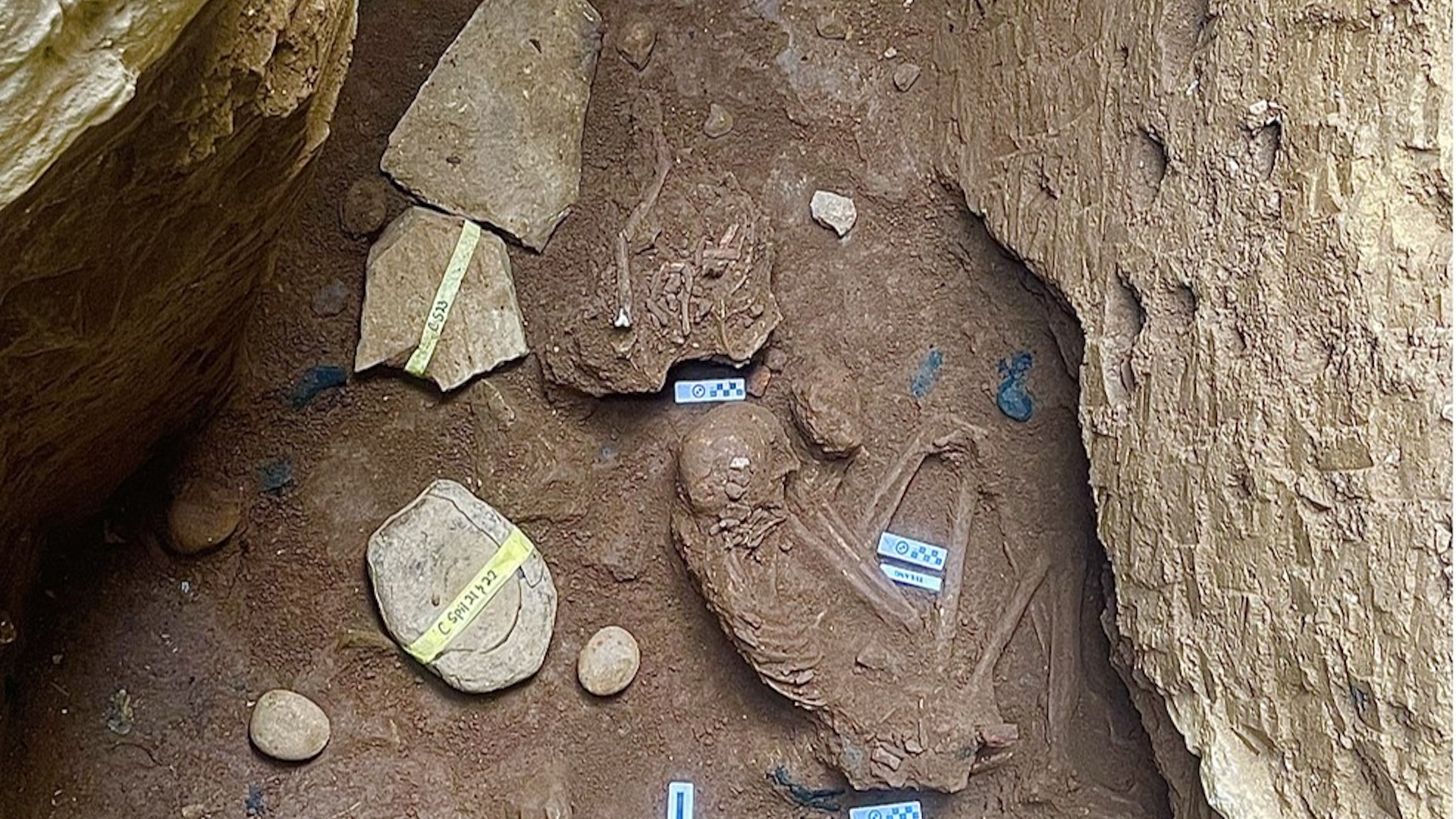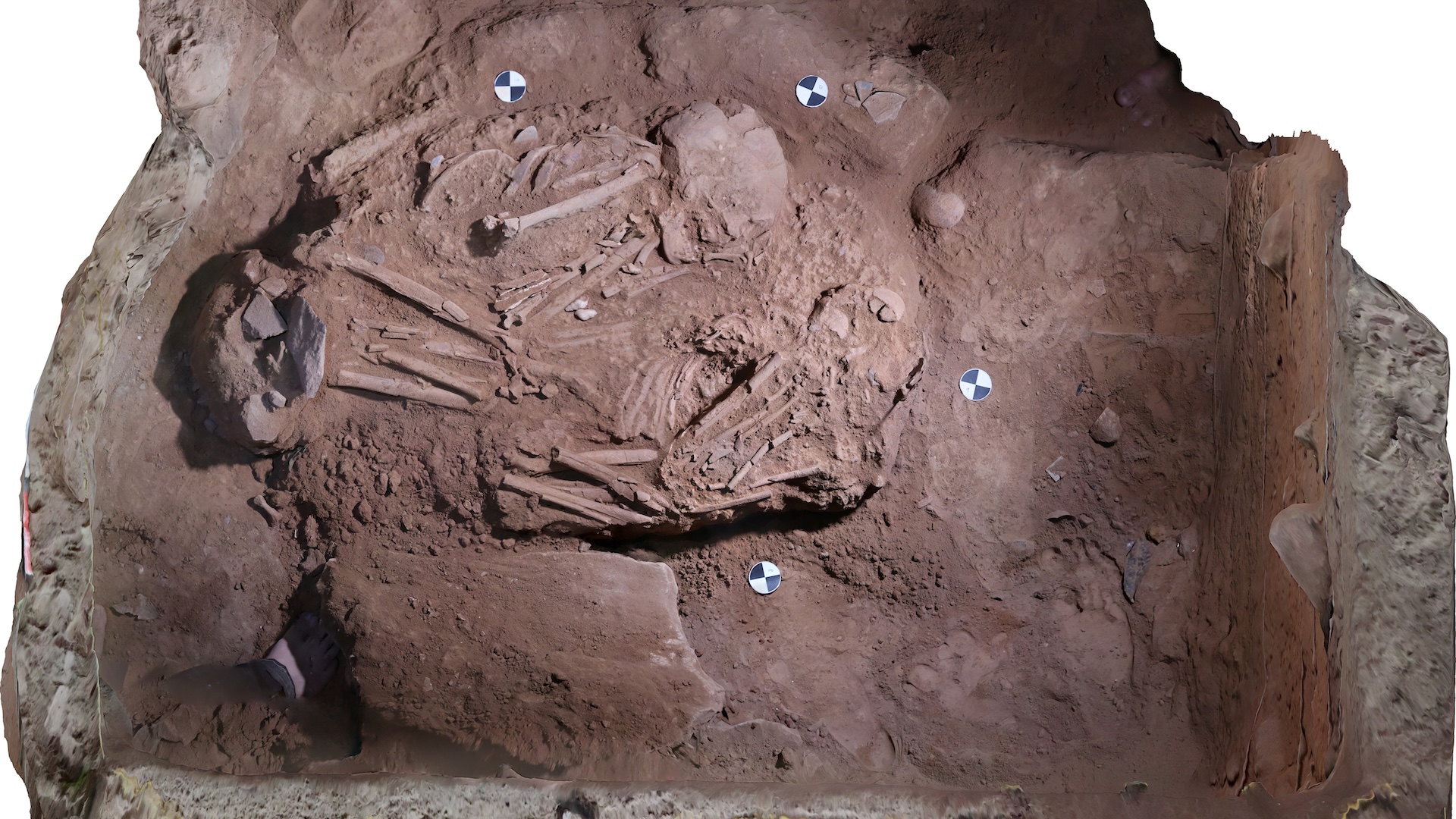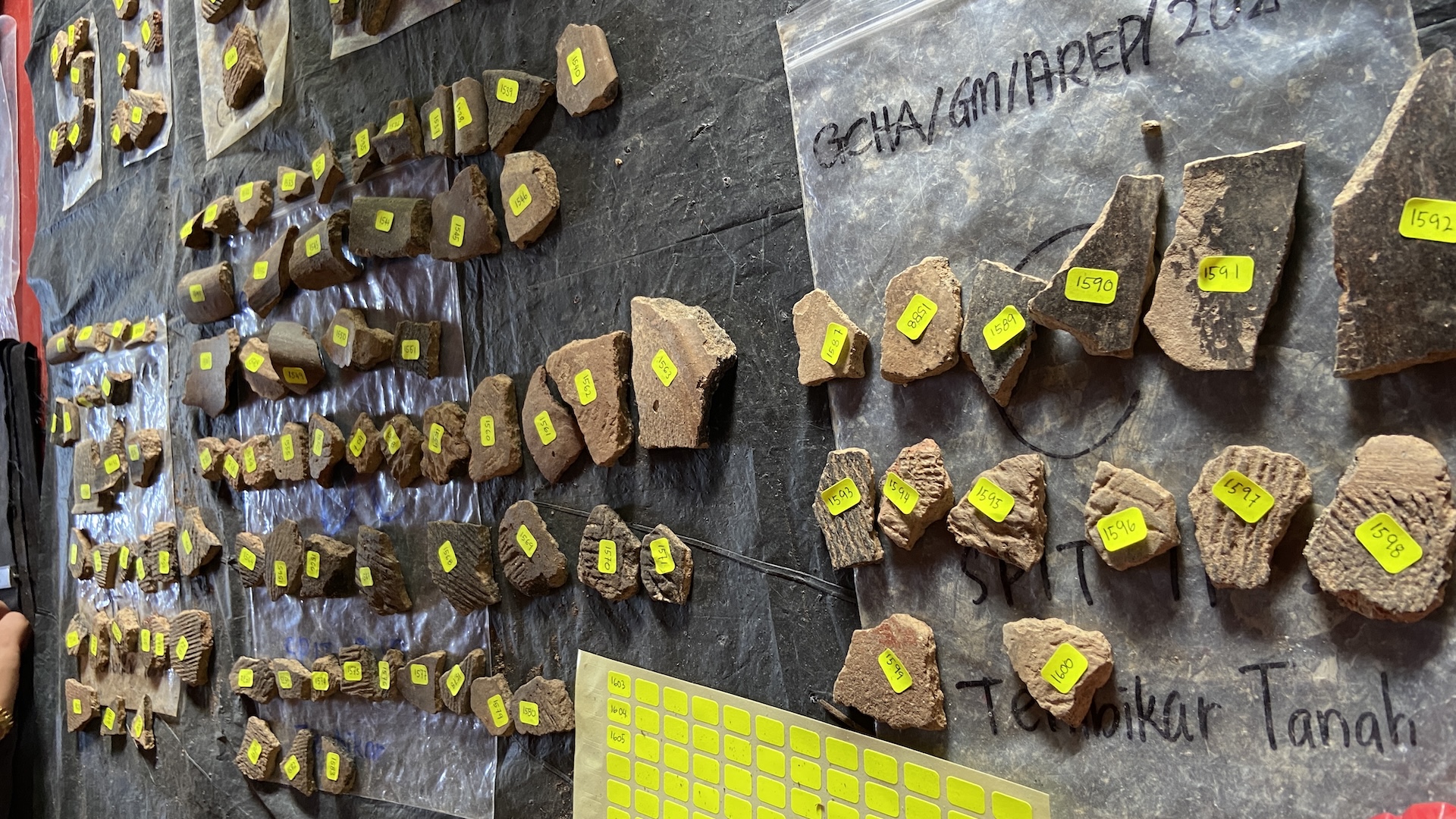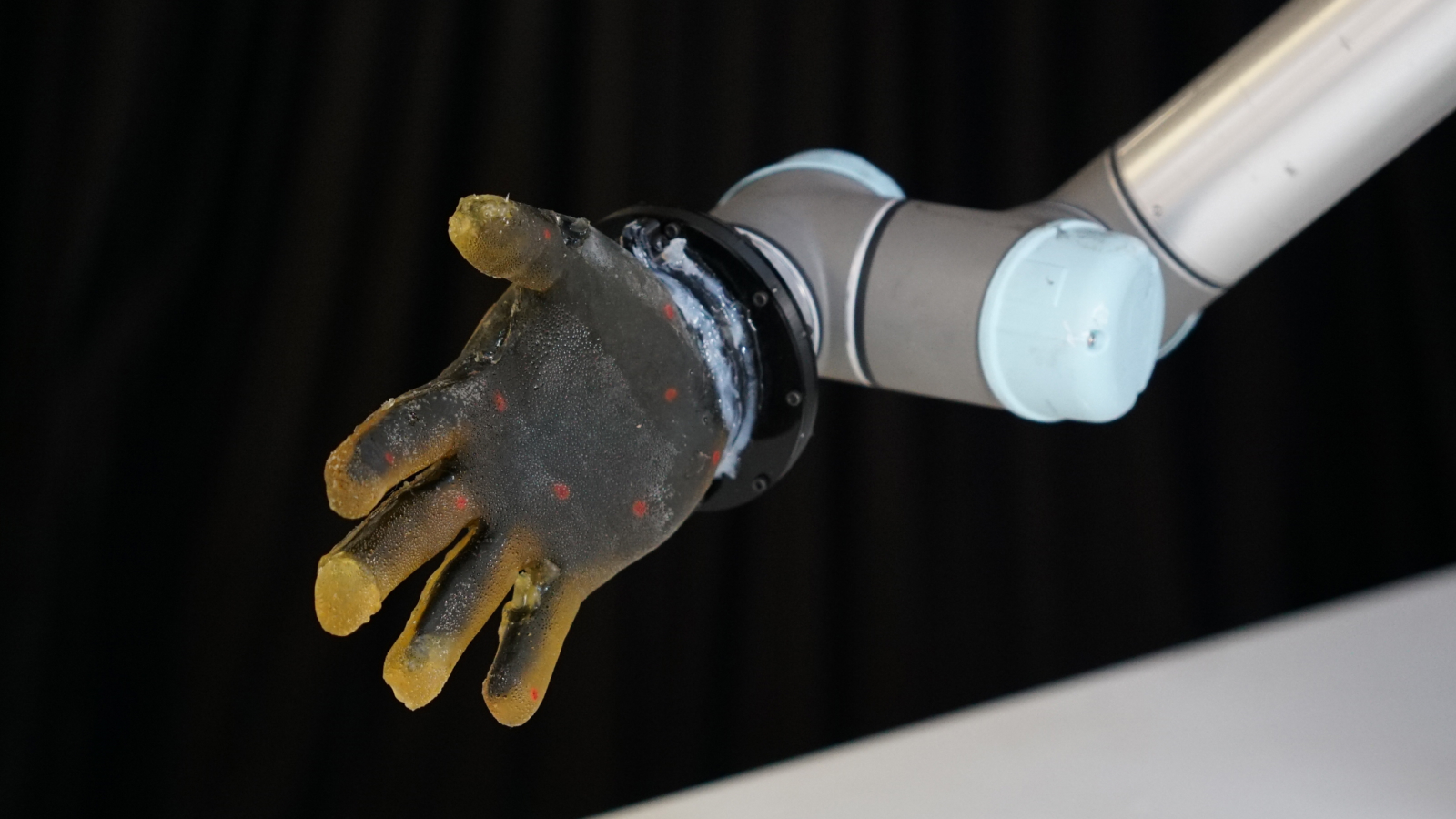16,000-year-old skeleton, crystals and stone tools discovered in Malaysian caves
Archaeologists think the earliest skeleton from the Malaysian excavation may be up to 16,000 years old.

Archaeologists investigating caves in Malaysia ahead of their flooding for a hydroelectric reservoir have discovered more than a dozen prehistoric burials they think are up to 16,000 years old.
The caves, in the remote Nenggiri Valley about 135 miles (215 kilometers) north of Kuala Lumpur, will be underwater if the reservoir fills as planned in mid-2027, creating a 20-square-mile (53 square km) lake to feed a 300-megawatt hydroelectric power station.
Zuliskandar Ramli, an archaeologist at the National University of Malaysia, told Live Science that most of the skeletons seemed to be from the pre-Neolithic culture of the region.
Some scholars suggest this was a branch of the hunter-gatherer Hoabinhian culture, who made distinctive stone tools found in other parts of Southeast Asia, from southwest China to Indonesia. Scientists also think the Hoabinhian peoples used many wild plants — including pepper, broad beans and betel nut — that are domesticated in the region today.
Ramli, who led the excavations at the Nenggiri Valley, said his team had found a total of 16 individuals buried in 13 limestone caves at four sites.
Related: Look into the eyes of a Stone Age woman in this incredibly lifelike facial reconstruction


Cave finds
Fifteen of the skeletons were buried in a crouched or "fully flexed" position, which indicates a pre-Neolithic burial in this region, Ramli said. But the other skeleton had been buried in an extended position, and dating of the sedimentary layers in the cave, including radiocarbon dating, suggested it originated in the Neolithic period about 6,000 years ago.
Get the world’s most fascinating discoveries delivered straight to your inbox.
As well as the 16 skeletons, the archaeologists recovered more than 71,000 prehistoric artifacts from the caves.
Many are worked fragments of stone tools, but the excavators also found thousands of pieces of pottery, as well as stone ornaments.


Malaysia's government-owned Bernama news agency reported that the archaeological work at the Nenggiri Valley sites began in March 2022 and concluded in October 2023. One of the most important finds was a complete human skeleton in a cave called Gua Keledung Kecil that is estimated to date between 14,000 and 16,000 years old.
"This is the most complete and oldest skeleton in a fully flexed position found in the country," Ramli told Live Science.
Grave goods
Many of the artifacts were grave goods that had been deliberately buried in the caves with the dead, Ramli said. In the pre-Neolithic graves, they commonly included stone tools; hematite minerals, or red ochre; and crystals.
In the grave from the Neolithic period, however, the burial goods included a stone bracelet, polished stone tools and pieces of pottery, he said.
The Nenggiri hydroelectric project is expected to cost $5 billion Malaysian Ringgit, or more than $1 billion USD.
As well as providing electricity to Malaysia's power grid and water for irrigation projects, the dam's construction is expected to provide 2,000 jobs to the Indigenous Orang Asli and other local people, Bernama reported.
But critics say the dam will negatively impact Orang Asli villages along the Nenggiri river and submerge ancestral lands and forests.
Tom Metcalfe is a freelance journalist and regular Live Science contributor who is based in London in the United Kingdom. Tom writes mainly about science, space, archaeology, the Earth and the oceans. He has also written for the BBC, NBC News, National Geographic, Scientific American, Air & Space, and many others.
